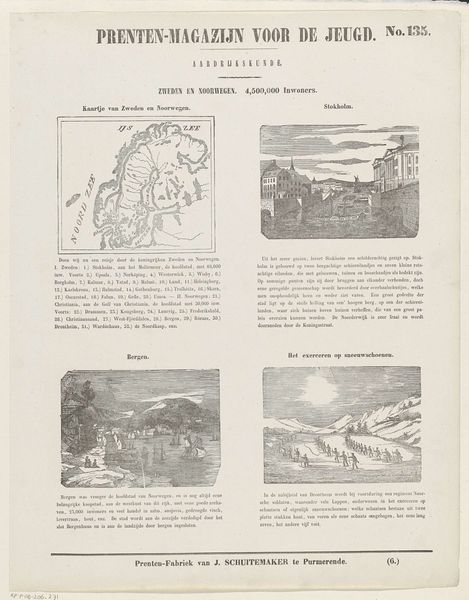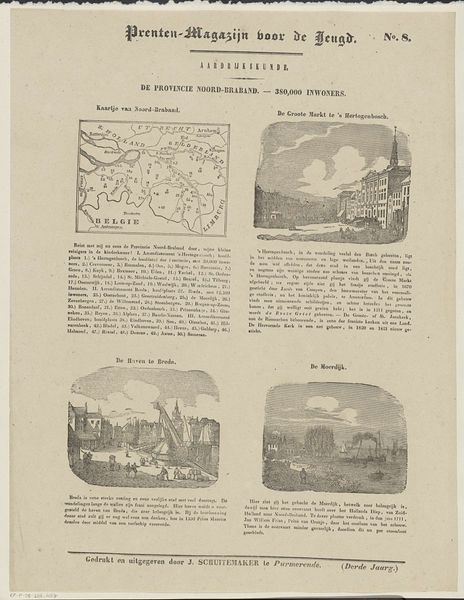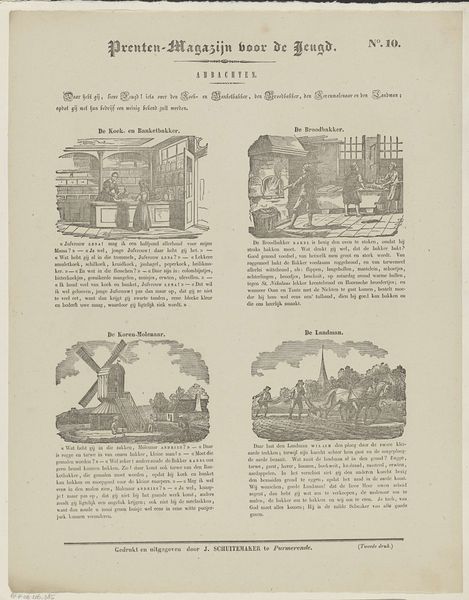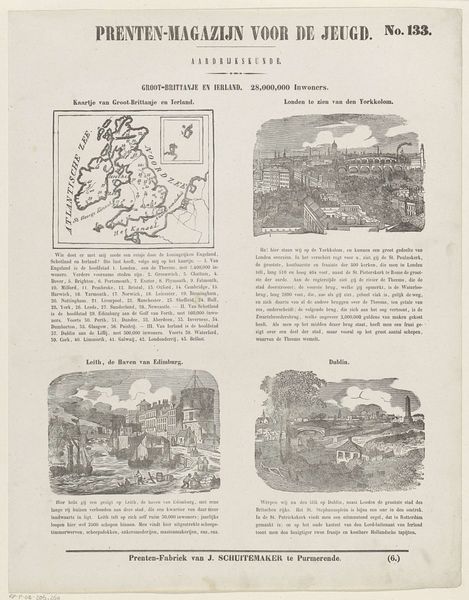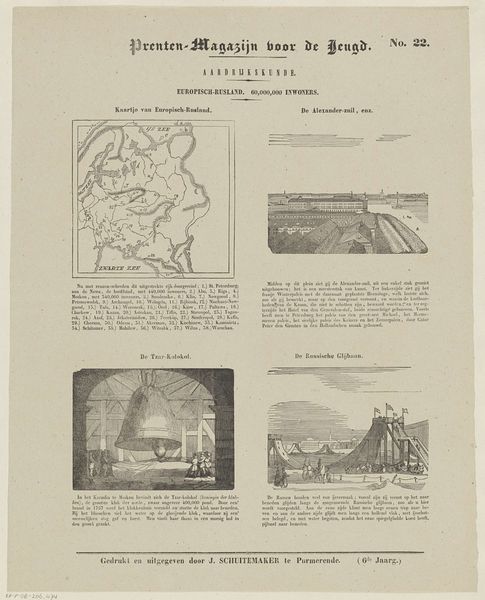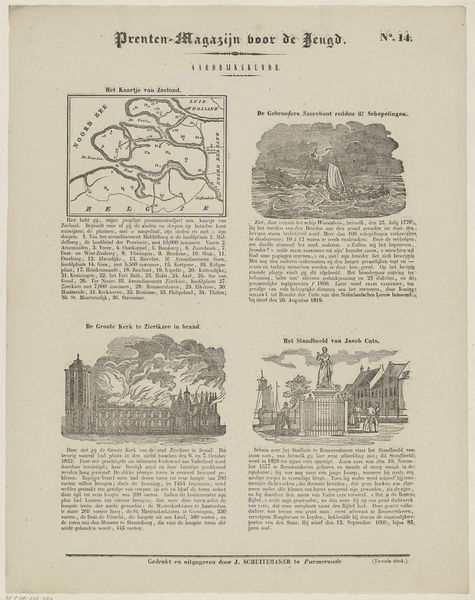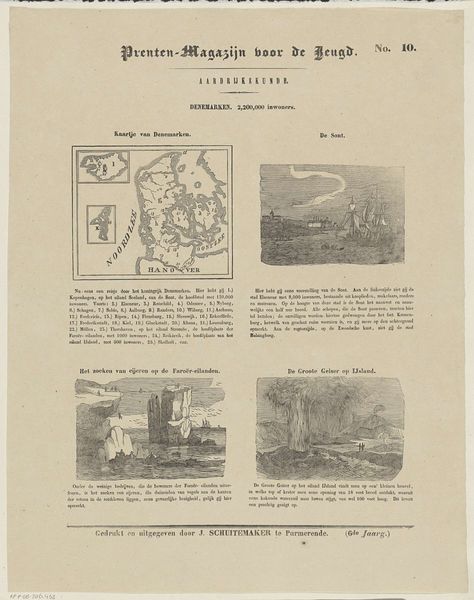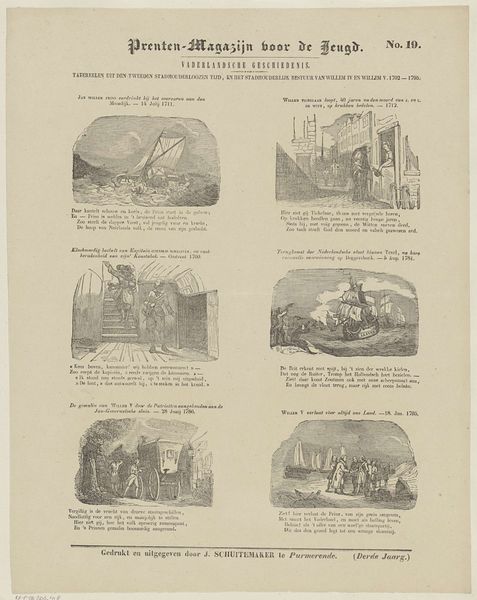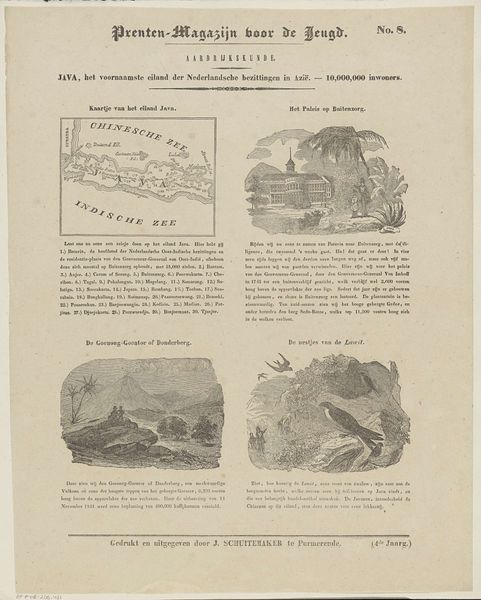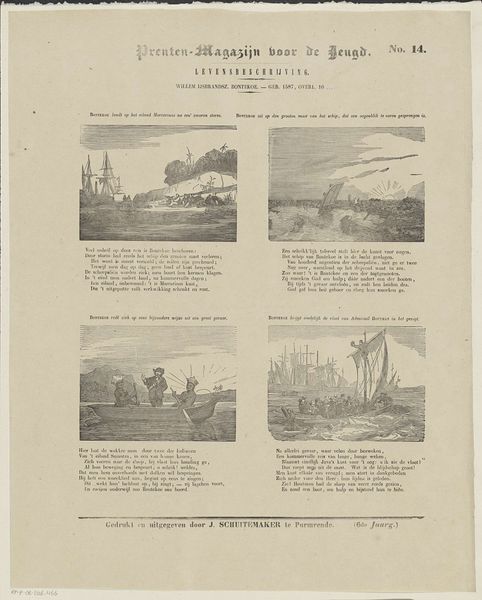
print, engraving
# print
#
landscape
#
cityscape
#
engraving
Dimensions: height 424 mm, width 335 mm
Copyright: Rijks Museum: Open Domain
Curator: This print, titled "Zweden en Noorwegen. 4,500,000 inwoners," from 1847, showcases an early perspective on Scandinavian identity. Jan Schuitemaker is credited as the creator, using engravings in printmaking to bring it to life. What strikes you about it? Editor: There's a somberness to the presentation, despite being about geography and people. The monochromatic, almost clinical, depiction, contrasted with what I assume are scenes of everyday life, creates a distancing effect. Is that intentional, do you think? Curator: The scenes point toward that feeling, absolutely. Look at how the artist chose these specific glimpses. We have a map, then Stockholm with its architecture, Bergen, with its bustling harbour. The final vignette showing what looks like soldiers in snowshoes could easily symbolize the hardships and martial nature attributed to Scandinavian lands in the 19th Century imagination. Editor: Exactly! The map, devoid of color, reduces nations to borders and measurements—almost as an act of colonization by categorisation. And juxtaposing Bergen with Stockholm underlines the stark divide between labor, trade, and the seats of power. This speaks to class dynamics. Curator: Precisely. And if we consider printmaking’s role at the time—as a method for widely disseminating ideas and information—Schuitemaker's choice becomes clearer. These images become emblems not just of geography, but of a carefully cultivated idea of nations and citizenship. Editor: And perhaps who *counts* as a citizen. 4,500,000 inhabitants—that's presented almost as a resource, a labour pool. There is a sense of the value projected onto these communities, and on what and who they were built by. Curator: Indeed. Looking closer now, I see it as an emblem, encapsulating emerging nationalism, perhaps without ever touching upon an overtly political tone. The quiet starkness and its implications become hard to ignore. Editor: I agree; the beauty here lies in the quiet tension and layers. We must recognize our historical framing and how its impact remains on contemporary perspectives. The landscapes can be analyzed on many levels and become cultural echoes through visual language.
Comments
No comments
Be the first to comment and join the conversation on the ultimate creative platform.

